“乐器之王”真不是吹的。

上周联合国教科文组织公布了非物质文化遗产名录更新,新增33项中,意大利那不勒斯的传统批萨饼和德国的管风琴制造最吸引我注意。
虽然不是什么大新闻,却觉得有趣。一个如此接地气,一个生在殿堂;一个是熟能生巧练出来的手艺,一个是堪称世界上最严密的机械制作。
庄严、神圣、高雅,可能是管风琴给大多数人留下的印象。但其实,它也并非生来就是贵族。

莫扎特所谓的“乐器之王”
提起管风琴,我们总是想到巴赫。但是其实莫扎特和贝多芬都是当时的宫廷风琴手。
所以莫扎特会称赞管风琴:“在我的眼睛和耳朵里… … 是乐器之王”(采自1777年10月17日至18日给他父亲的信)
而这种乐器在进入教堂和宫廷之前已经存在了1100多年。

公元前246年,一个叫Ctesibius的人发明了由水压调节的机械吹笛工具, 称为水压风琴(Hydraulis,Water Organ)。
它有很多管子,每个音管都由一个键来控制,可以说是管风琴的前身。只不过那时还没有金属做音管,直到中世纪的风琴才开始使用金属。
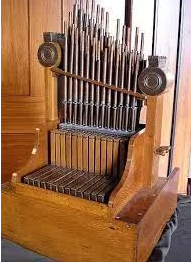
水压风琴
这种乐器很快传遍了整个地中海地区, 记载显示经常在宴会、游戏和马戏会上表演,这与管风琴现在的形象非常不一样,直到古罗马帝国时期它也是民间最流行的乐器之一。

古罗马乐队(from the Zliten mosaic)
公元395年出现了第一个利用空气压缩原理发音的管风琴建成,这之后水压风琴就逐渐被替代了。
在十世纪左右,风琴开始进入教堂。究竟如何以及为什么仍然是一个谜。由于受到教会喜爱,被用于宗教仪式并继续发展壮大,并衍生出各种大小不一、功能不一的类型。
到了十四世纪, 风琴在整个欧洲的修道院和大教堂中得到了广泛的应用。大大小小的风琴被用于各种节日活动,或与唱诗班交替进行礼拜仪式。
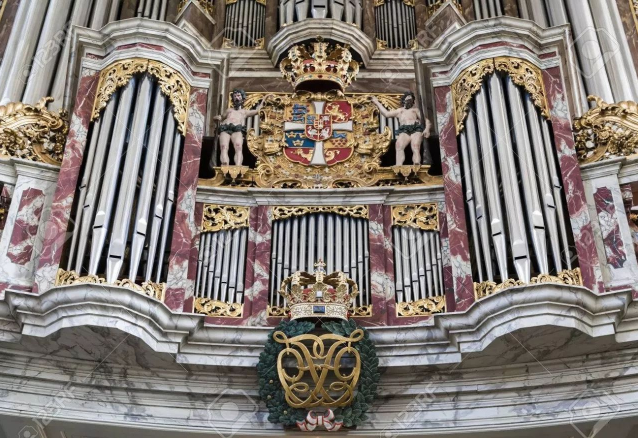
the Holy Trinity Trinitatis Church in Copenhagen Denmark
巴洛克时期是管风琴的黄金时期,更不用说巴赫一个人的贡献了。他创作的管风琴作品集已知的就有9册之多。
除了巴赫,德国巴洛克时期作曲家兼教堂管风琴师帕赫贝尔,他的《f小调恰空》 也是最著名的曲子之一。
这个时期不同的国家开始发展不同风格的管风琴。音管更多地暴露在了外面,并加以繁复的装饰。只可惜二战期间,欧洲一些历史悠久的管风琴被破坏或摧毁。
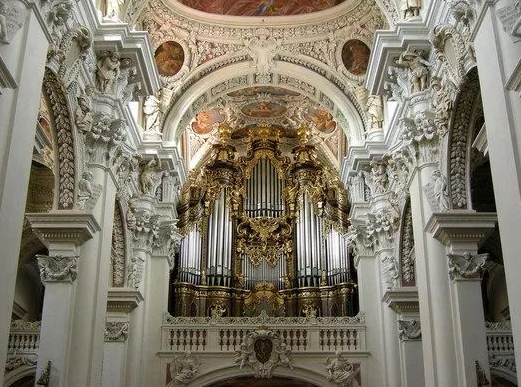
最大的教堂管风琴 St. Stephen’s Cathedral
1886年, 作曲家卡米尔·圣-桑创作了他的第三交响曲——《风琴》交响曲。这是第一次将风琴作为交响乐中的重要角色。
值得一提的是,圣-桑被李斯特称为“最伟大的风琴家”,他们二人也是好友。当他的第三交响曲即将出版时,李斯特病逝,圣-桑便在交响曲总谱上题词——纪念李斯特。
而浪漫主义时期,管风琴的衰落似乎也不可避免。作曲家对键盘的要求越来越高,越来越追求个性,钢琴总是在革新换代,管风琴就渐渐被比下去了。
不过20世纪还流行过一种剧院管风琴,用于为默片配上特殊声音效果。而随着电子管风琴的普及,现在许多教堂都用之取代。
最复杂的机械设备
在著名的《音乐与音乐家词典》中,作者格罗夫爵士(Sir George Grove),写道 :
“风琴和时钟, 是工业革命前所有机械设备中最复杂的。在乐器中, 它的历史是涉及最广泛的, 其现存的剧目是最古老的… … 没有其他乐器能够想它那样赢得如此公开广泛的尊重。”
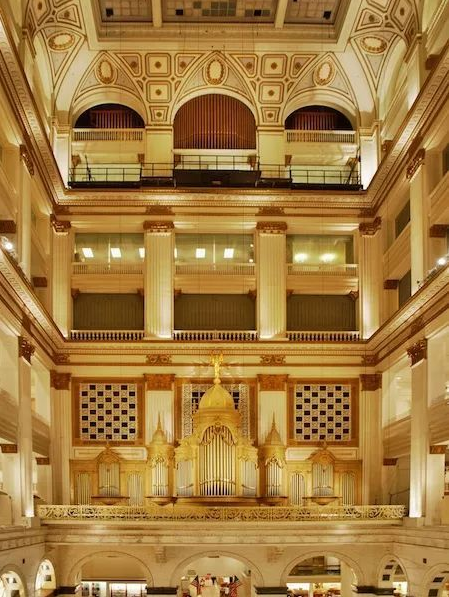
位于费城的沃纳梅克管风琴(The Wanamaker Organ in the Grand Court),世界上最大的功能齐全的管风琴,28,750个音管。周一至周六每天鸣两次。
标准的管风琴包括几个主要部分:音管、键盘、音栓和风箱。音管在风箱的上面,风箱中安装栓塞与琴键相连。演奏者靠操作琴键,将风箱中的气输送到音管中,然后产生乐音。
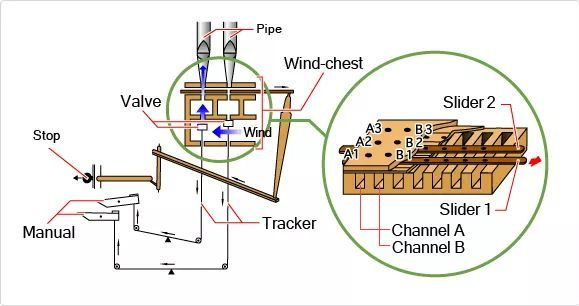
直到大约1500年,风琴也只能发出一种音色。而后来增加了音栓,控制音色和音量。而音栓的英文很有意思,是stop。
拔音栓是个体力活,所以有一句俚语: Pull out all the stops!由直译“拔起全部的音栓”,衍生为新的含义:“全力以赴”。
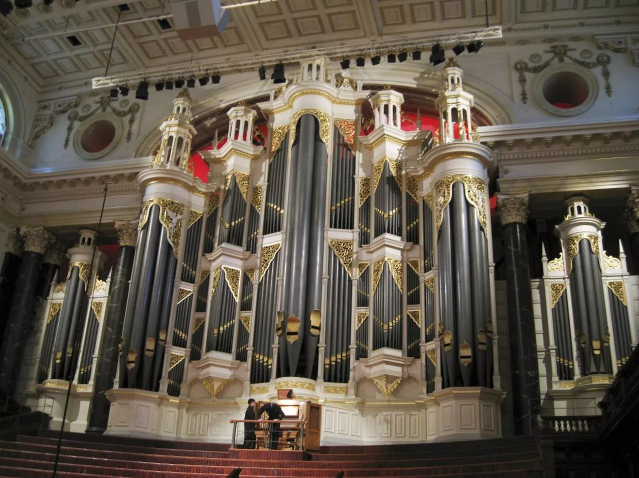
悉尼市政厅大管风琴(Sydney Town Hall Grand Organ),曾经世界上最大的管风琴
管风琴的每个音符都对应一个独立管道,所以拥有上千根管道十分正常。为了方便演奏,管道通常被分成不同的部门, 每个部门都有自己的键盘,不仅要用手,最大的管道通常是用脚从踏板键盘控制。所有的管道构成的音域极宽,可以覆盖整个人耳听觉范围的上下限。
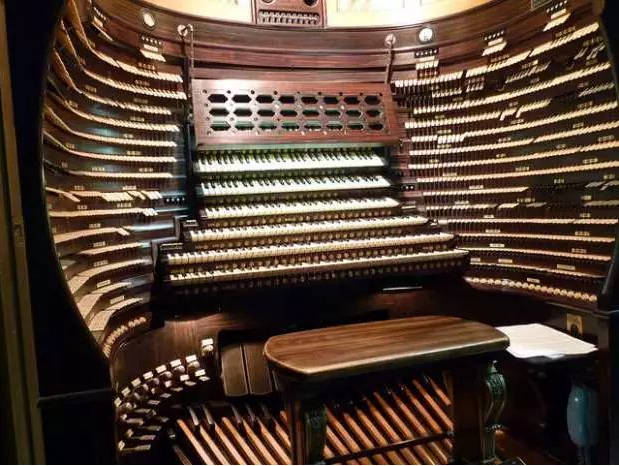
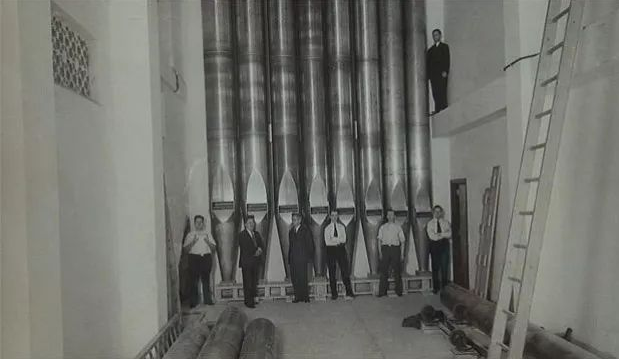
美国亚特兰大城市礼堂管风琴(Boardwalk Hall Auditorium Organ),全世界最大的管风琴,它有33112个音管,这是官方数据,确切数字还是未知。
所以制琴就显得尤为重要。管身长度影响音高,管口﹑风量大小影响音强弱,而管径、管嘴形状、甚至材料合金比例等因素,都会对声音产生影响。音管的材料一般是铜﹑锌﹑锡-铅的合金,以及上等的木材。
管风琴一般和教堂或剧院同时建造,它是建筑的一部分。乐器本身就是艺术杰作。
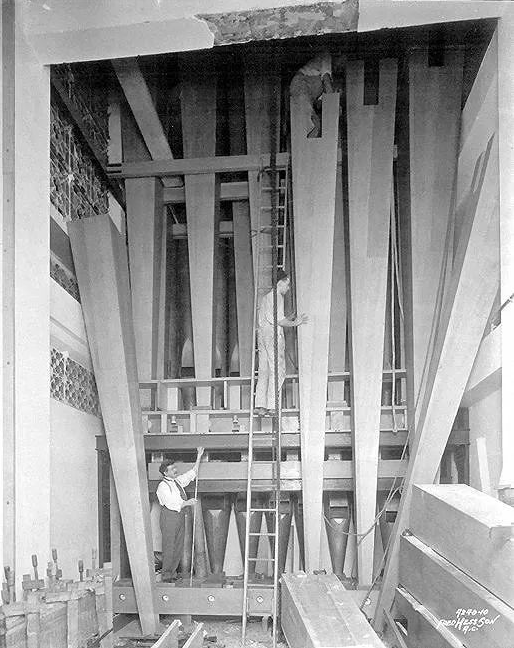
管风琴大赏
有一位德国摄影师罗伯特·格茨弗里德 (Robert Gotzfried) ,他走遍了整个德国,拍下了他能找到的最美丽的管风琴的肖像。
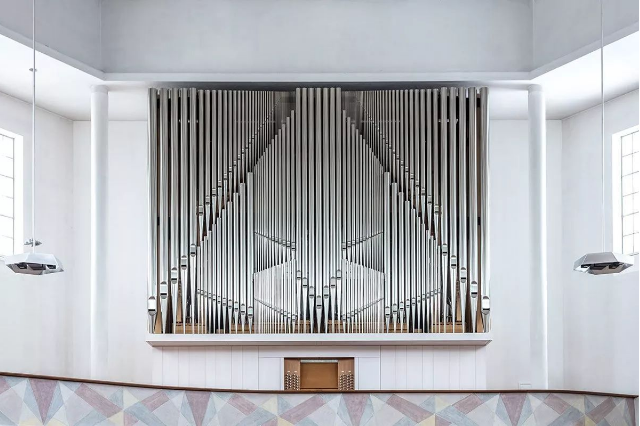
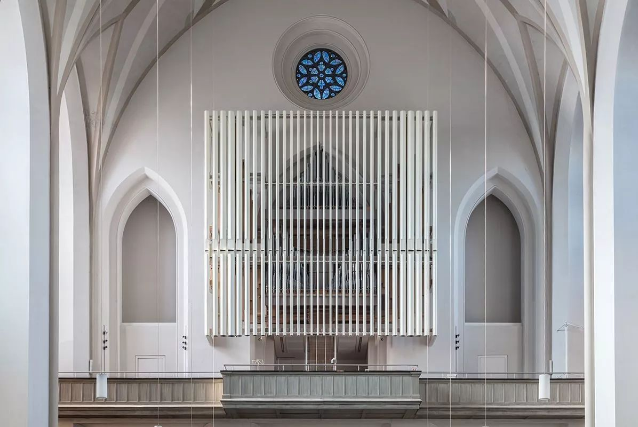
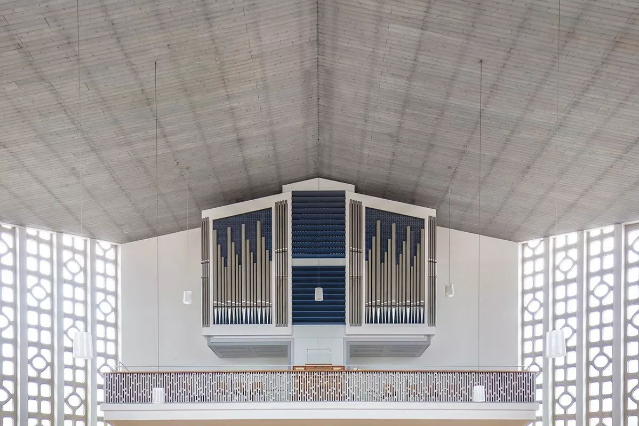
他说:“我不信任任何一种宗教,但是我发现我自己喜欢教堂建筑。”
(很遗憾没找到这些教堂的名字。)
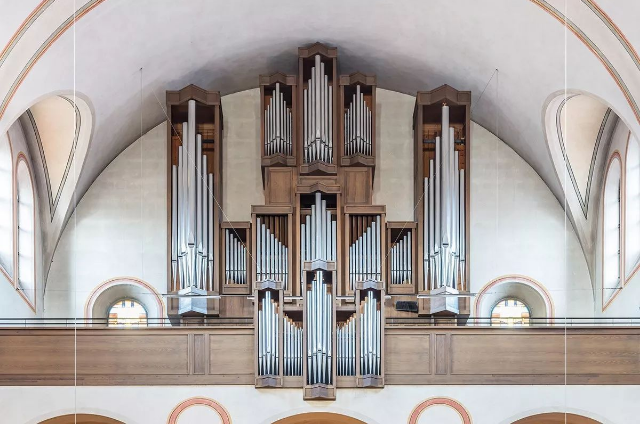
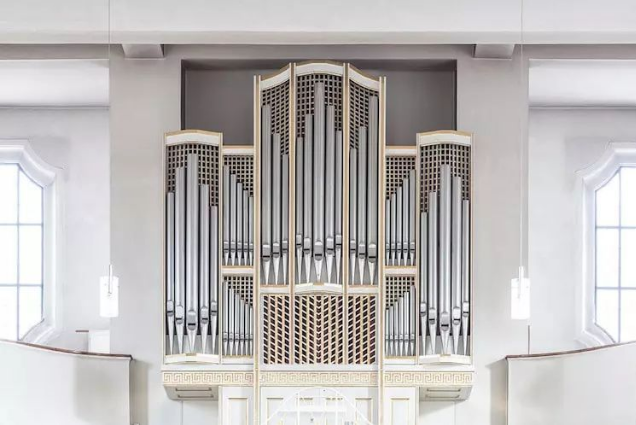
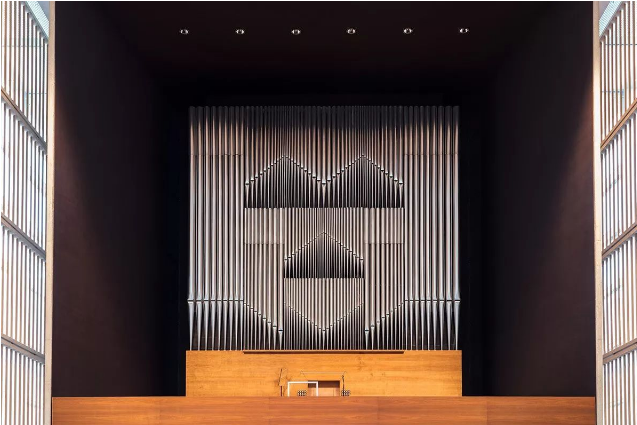
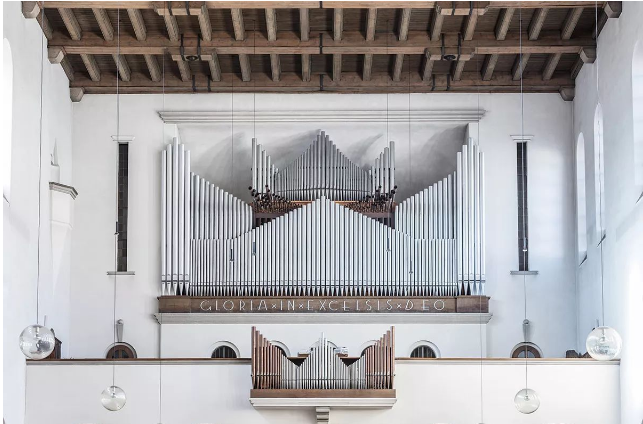

德国的管风琴文化源远流长,当今最著名的管风琴制造家族就是德国克莱斯(Klais Orgelbau)家族。
据德国世界文化遗产委员会提供的数字,目前共有超过5万架管风琴分布在德国各地的教堂和音乐场馆。德国的管风琴制造企业有400家,从业人员2800人。德国制造的管风琴销往世界各国。
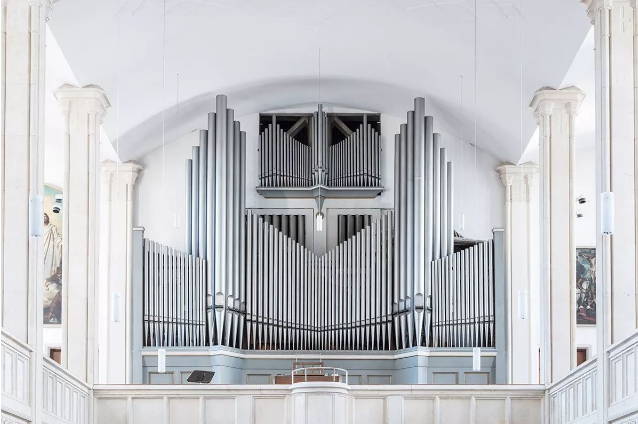
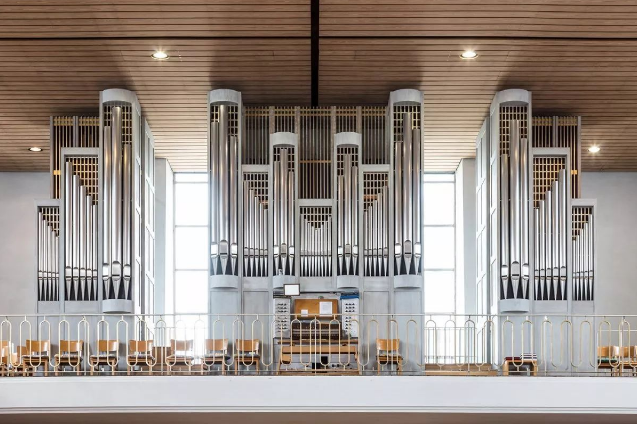
所以德国管风琴制造申遗成功,也是十分有民族自豪感的一件事。
“The king of musical instruments” is not really blowing.
Last week, UNESCO published the updated list of intangible cultural heritage, adding 33 items. The traditional pizza in Italy Naples and the organ manufacture in Germany attract me most.
It’s not a big news, but it’s fun. One is so earnest, one is born in the hall; the other is the craft that is well practiced, one is the most rigorous mechanical production in the world.
Solemn, sacred and elegant, it may be the impression that the organ has left for most people. But in fact, it is not born to be a nobleman.
What Mozart calls “the king of musical instruments”
To bring the organ, we always think of Bach. But Mozart and Beethoven were both the court organist at that time.
So Mozart would praise the organ: “in my eyes and ears… Is the king of the instrument” (a letter to his father in from October 17 to 18, 1777).
This instrument has existed for more than 1100 years before entering the church and the court.
In 246 BC, a man named Ctesibius who invented the machine tool by adjusting pressure piping, called hydraulic organ (Hydraulis, Water Organ).
It has a lot of tubes, each of which is controlled by a key. It can be said to be the precursor of the organ. It was only at that time that there was no metal at the time until the medieval organ began to use metal.
Water pressure organ
This instrument soon spread throughout the Mediterranean area, and recorded that it was often performed at banquets, games and circus meetings, which is very different from the current organ image. Until the ancient Rome Empire, it was also one of the most popular folk musical instruments.
The ancient Rome band (from the Zliten mosaic)
In 395 ad, the first pipe organ, which was built with the air compression principle, was built, and the water pressure organ was gradually replaced.
Around tenth Century, the organ began to enter the church. What and why is still a mystery. Because of the love of the church, it is used in religious rites and continues to grow, and derives various types of different sizes and different functions.
By the fourteenth Century, the organ was widely used in European monasteries and cathedrals. The organ of large and small is used for various festivals, or alternates with the choir for the service of worship.
The Holy Trinity Trinitatis Church in Copenhagen Denmark
The Baroque period was the golden age of the organ, not to mention the contribution of Bach. There are more than 9 copies of his works of organ works.
In addition to Bach, the German Baroque composer and church organist Pachelbel, one of his songs “F minor Chaconne” is the most famous.
In this period, different countries began to develop different styles of organ. The sound tubes are more exposed and decorated. It is only a pity that during the Second World War, some of the long history pipe organs in Europe were destroyed or destroyed.
The largest church pipe organ St. Stephen ‘s Cathedral
In 1886, composer Camille Saint – sang created his third symphony, the symphony of the organ. This is the first time to play the organ as an important role in the symphony.
It is worth mentioning that Saint – sang is called “the greatest accordion” by Lester, and the two of them are also friends. When his third symphony is forthcoming, Lester died in Saint Saens symphony for inscription on the memorial Lester.
In the romantic period, the decline of the organ seems to be inevitable. The composer’s request for the keyboard is getting higher and higher, the more and more the pursuit of personality, the piano is always innovating, and the organ is gradually being compared.
But in twentieth Century a popular theatre organ for silent films with special sound effects. With the popularity of the electronic organ, many churches are now being replaced.
The most complex machinery
In the famous “dictionary of music and musicians”, author Grove (Sir George Grove) Sir, wrote:
“The organ and the clock are the most complex of all the machinery before the industrial revolution. In musical instruments, its history is the most widely used. Its existing repertoire is the oldest. No other musical instrument can win such an open and extensive respect. ”
The Wanamaker tube organ in Philadelphia (The Wanamaker Organ in the Grand Court), the world’s largest fully functional pipe organ, and 28750 sound tubes. Two times a day from Monday to Saturday.
The organ standard including several main parts: sound tube, keyboard, and bellows. The sound tube is above the air box, and the wind box is connected with the keys in the installation of the wind box. By manipulating the keys, the performer loses the air in the bellows to the sound tube, and then produces the sound.
Until about 1500, the organ had only one tone. And later added a color and volume control. And that the English is very interesting, is stop.
Stop pulling is hard work, so there is a Pull out all the stops: slang! By the pulling all. “, derived for the new meaning:” the best”.
The Sydney Town Hall Grand Organ, the largest organ in the world, is the largest pipe organ in the world.
Every note in a pipe organ corresponds to an independent pipe, so it is very normal to have thousands of pipes. In order to play conveniently, pipelines are usually divided into different departments. Each department has its own keyboard, not only by hand, but also by the foot from the pedal keyboard. All the pipes are made of very wide range, which can cover the upper and lower limits of the whole human ear’s hearing range.
视频来源网络 !如有侵权 ,请联系删除 论点和本频道无关
Video source network! If there is infringement, please
contact delete.
未经允许不得转载:環球樂器博览网 » 管风琴都成为非遗了,你对这位“乐器之王”了解多少?
 環球樂器博览网
環球樂器博览网
评论前必须登录!
登陆 注册